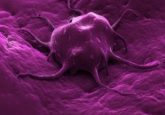Clonal diversity in glioblastoma: is it clinically relevant?
Glioblastoma (GBM), the most common primary brain cancer, is characterized by inter- and intra-patient genomic and histopathological diversity, arising from the complex dynamics that underpin its development. This diversity generates different patterns of clinical behavior whose common feature is the rapid emergence of treatment resistance. All clinicians treating cancer recognize marked variation in tumor behavior and response to therapy between patients with the same tumor type. Multiple factors contribute to this variability, including the tumor environment, pharmacodynamics and heterogeneity within (intratumor) and between (intertumor) individual patients [1–4]. Tumor heterogeneity refers to subpopulations of cells with distinct genotypes and phenotypes that may display divergent biological behaviors within a primary tumor or between tumors of the same histological subtype.
Click here to view the full article




